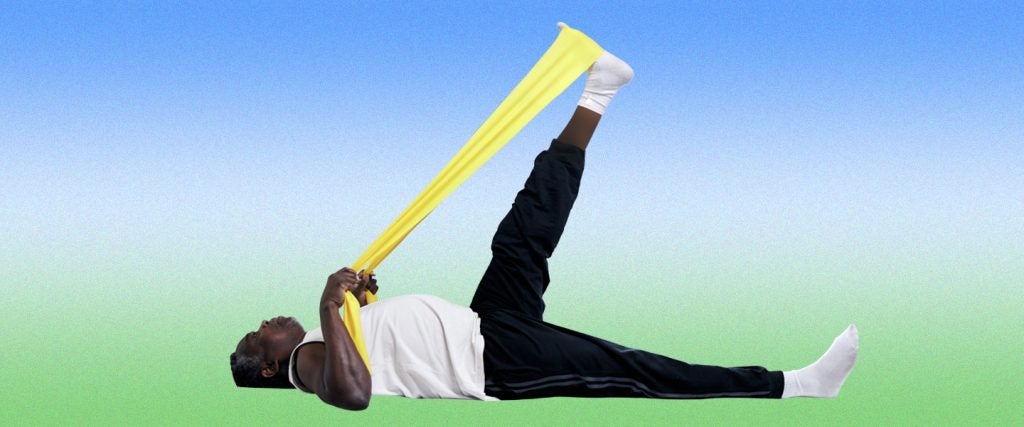Given its name, I wouldn’t blame you for thinking that passive stretching sounds a lot better than static stretching. After all, if given the option, most people would prefer to do something passive rather than something active — especially if they could achieve the same end result. And to be sure, lying around and passively stretching sounds infinitely more enjoyable than leaning aggressively into the sensation of a constant tug against a tight muscle, and feeling like your appendage is being extended right to the point of snapping.
So, is it possible to essentially do nothing, remain totally relaxed and comfortable, and somehow experience an appreciable stretch even when you’ve placed minimal effort behind the activity?
How is passive stretching actually different from any other kind of stretching?
In most scenarios, it probably won’t be as different as you’re hoping.
When stretching is mentioned in a vacuum, most people are going to assume that static stretching is being discussed; it’s far and away the most common form of stretching engaged in during P.E. classes and the practice sessions of organized sports teams. When you execute a static stretch, you’re leaning heavily into the tightness of the muscle and holding that position for at least 30 seconds — and often for minutes at a time — until the muscle loosens itself.
Static stretching is also routinely the most time-consuming, boring and obnoxious part of fitness training, as it takes the form of pain without operable productivity. Think about it: Since stretching is most efficient when it’s performed at the tail end of a workout, all it’s really doing is preventing injuries and tightness in between trips to the gym, and you never truly know how many muscle strains you’re avoiding if you’re never forced to endure them.
Conversely, passive stretching can mean several different things depending upon who is describing it to you. But the broadly accepted feature of passive stretching is that you remain wholly relaxed while someone — or something — else performs the stretches on your body. The purest forms of stretching that align with this definition occur when you assume a relaxed position and allow gravity to work against your limbs to stretch them, or your personal trainer or physical therapist assists you with a stretch.
The other definition of passive stretching, which is a bit more contentious, is when you use an implement to stretch yourself, like an elastic band, a belt or a wall. Even if you attempt to apply minimal effort behind this form of stretching, it can be difficult to differentiate between a static stretch and a passive stretch if the eventual result is that you end up committing as thoroughly as possible to the stretch provided by the external device.
So which form of stretching should I use?
The cop-out answer would be to tell you to use whatever form of stretching you prefer, but there are a few other considerations to factor in.
If you have no prior history of problems with your muscles and joints, you can work your way through all of your preferred stretches in 30 seconds apiece if you go the static route. Maximizing your time is important, and besides that, you won’t always have access to a personal assistant who can extend to you the luxury of being able to relax on your back or stomach while someone else does the work of determining how far your muscles can safely stretch.
That said, passive stretching may be more time-consuming, but it’s also generally a lot safer and less painful than the static form of stretching. Nonetheless, if you rely on another human being to work you through your collection of stretches, definitely enlist someone who actually knows what they’re doing. If they don’t have the physiological understanding of a physical therapist to tug, yank and prod you through your passive stretches, they could injure you.
And if that happens, you might end up visiting a physical therapist to rehabilitate a muscle tear that never would have happened if you’d simply sought the help of one in the first place.

